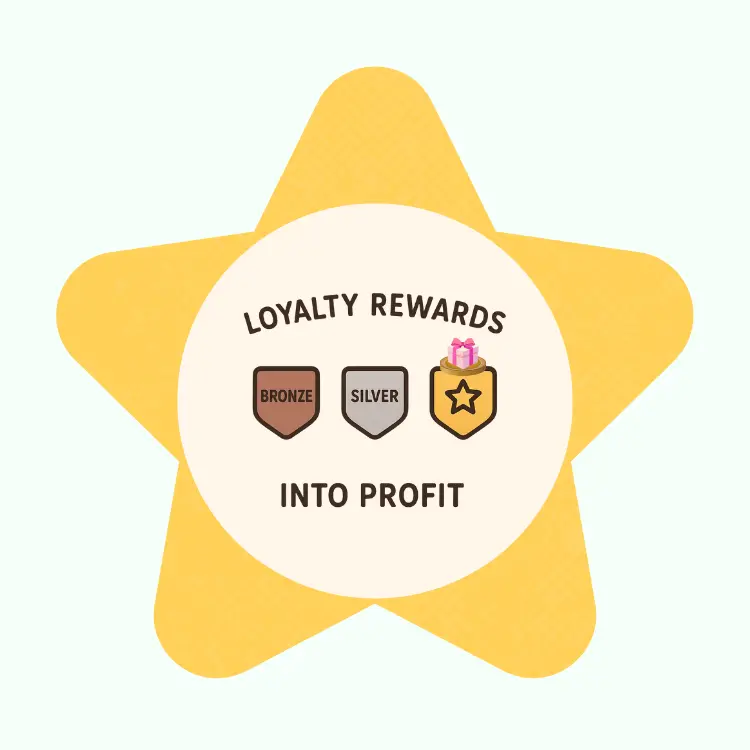Email sends need to be carried out with purpose. That purpose is the growth of your D2C brand. To ensure you are moving toward that purpose you will need to ensure you're diligently tracking your Revenue per Send (RPS), also known as your Revenue per Email Sent (RPE) or Revenue per Recipient (RPR).
Doing this isn’t just smart, it’s to ensure your brand's survival. For D2C and e-commerce operators, RPS is the metric that translates every creative decision, segment tweak, or discount experiment directly into dollars earned for your business.
Yet, most marketers still treat RPS as a broad campaign outcome rather than the granular profit lens it should be. If your goal is to turn email from "just another acquisition channel," into a key component of your multi-funnel powerhouse, here’s how to track, and actually improve, your revenue per send.
[cta-btn title="Build Your Brand And Become A Member" link="/membership-pricing"]
Understanding Revenue per Send: What It Really Means in D2C Operations
Before you can optimize, you need to know exactly what you’re optimizing for. Revenue per send simply measures how much revenue you generate for every email sent.
The formula is basic:
Total Revenue from Email ÷ Total Number of Emails Sent = Revenue per Email (RPS)
This metric is your currency for email campaign efficiency and creative effectiveness. Unlike open rate or click-through rate, RPS asks, “Did this message create revenue (yes or no), and how much?”
For operators balancing budgets and growth targets, RPS reveals what’s actually working (not just what’s getting opens).
RPS is mission-critical for:
- Benchmarking campaign performance
- Calculating marketing ROI
- Defining realistic revenue goals
- Justifying bigger list investments or creative overhauls
If you’re not tracking RPS, you’re losing out on immensely powerful data analytics you can use to power other campaigns.
The Right Way to Track Revenue per Send (Beyond the Basics)
Getting accurate RPS is harder than plugging in a formula. Attribution, segment nuances, and campaign spillover can obscure what’s really making your e-commerce business the most revenue.
Advanced operators lean on these methods:
- Treat Every Send as Its Own P&L: Don’t lump all emails into nebulous campaign groupings—track RPS at the message level. When you break it out by flow, campaign, and even transactional send, you spot the silent killers or unexpected winners. The “Browse Abandon #2” reminder that quietly racks up $0.14 per send? That’s gold.
- Pipe Purchase Data Back with Customer IDs: UTM strings only credit last-click wins. Route first-party purchase data—with customer IDs—back into your ESP or CRM. That means you capture long-tail and cross-device conversions, not just impulsive “click, buy now” shoppers.
- Slice RPS by Opt-In Source: Not every subscriber is created equal. Those who join via a loyalty program behave (and buy) differently than post-purchase or paid media segments. Splitting RPS by acquisition channel surfaces hidden opportunities and weeds out low-value list bloat.
- Apply Attribution Windows Thoughtfully: Only crediting the last email before a sale is “CAC accounting” at its worst. Use a 7- or 14-day time-decay window so every touchpoint gets partial credit. This reframes the value of your welcome flow or lapsed-buyer sequence and stops you from cutting what’s working.
- Track Churn per Revenue (Not Just Revenue): High revenue is useless if each send costs you churn. Track unsubscribes or spam complaints per $1,000 earned. If $0.08 RPS actually costs you 6 unsubscribes per thousand sends, you’re paying a quiet “list fatigue tax.”
Five Niche Moves to Boost Your Email Revenue per Send
Turning your Revenue per Send to from something mediocre to meaningful.
Operators driving above-average email profitability usually run these plays:
- Switch to Net RPS, Not Gross: If you’re relying on expensive discounts or free shipping, subtract that cost from your topline before celebrating. Net RPS tells you what actually lands on the ledger.
- Baseline with 5% Hold-Out Control Groups: When testing frequency or creative, carve out a random 5% who see “business as usual.” This lets you measure true incremental lift, not just revenue that would have happened anyway.
- Map Fast-Opener Heat Maps: The first 30 minutes after send almost always generate most RPS. Optimize send times and audience splits to shift more users into this “fast opener” window. Small gains here can lift RPS double digits.
- Feed SKU-Level Clicks into Personalization: If your rec engine only knows a subscriber likes “shoes,” you’re underserving. When it knows “size 10 white sneakers,” every dynamic block works harder and average order value goes up.
- Redesign Re-Engagement With Revenue-Per-Pixel: Dormant segments need more than a “Hey, come back.” Track dollars generated per pixel of screen real estate (hero image vs. body vs. footer) and double-down on what converts.
[single-inline-tool]
Factors That Quietly Determine RPS (and How to Surface Them)
The core components behind strong RPS go far beyond prettier templates:
- List Quality & Source: High-bounce or disengaged segments hurt RPS and deliverability. Cut the dead weight and double down on sticky subscribers.
- Segmentation & Personalization: The tighter your segments (think buyer personas + behavior, not demographics), the higher your RPS ceiling.
- Compelling Subject Line & Offer Alignment: High opens and clicks don’t always equate to revenue, but without them, RPS lags by default.
- Send Cadence and Frequency: More isn’t always more. Find your sweet spot—not just for open rate, but for profit after unsubscribes.
Essential Tools for Tracking and Visualization
Even the best RPS strategies fail without tight measurement infrastructure.
To make it operator-proof:
- Use robust ESPs with deep revenue reporting (Campaign Monitor, Mailchimp)
- Set up dashboards (Looker, Tableau) tracking both RPS and supporting metrics (CTR, unsub %, complaint rate)
- Implement automated reports—weekly and campaign-based—for velocity and accountability
- Align your attribution model and reporting cadence across flows and campaigns
Smart Ways to Benchmark (and Know When You’re Winning)
| Niche |
Promo (Avg) |
Flows (Avg) |
High-Intent (Avg) |
| Supplements |
$0.12 |
$0.30 |
$0.80 |
| Beauty & Skincare |
$0.10 |
$0.25 |
$0.70 |
| Apparel & Fashion |
$0.08 |
$0.20 |
$0.55 |
| Home Goods & Decor |
$0.09 |
$0.22 |
$0.60 |
| Electronics & Gadgets |
$0.07 |
$0.18 |
$0.45 |
| Food & Beverage |
$0.11 |
$0.28 |
$0.75 |
| Pet Products |
$0.10 |
$0.25 |
$0.70 |
Not every brand will hit the same RPS benchmarks. A $0.15/send might be stellar for a supplement brand but middling for designer apparel. Instead, focus on:
- Your own month-on-month RPS growth
- Comparing performance by segment and acquisition source
- Industry norms as guardrails, not gospel. For example, some restaurants tolerate early losses knowing long-term LTV wins out.
Warning signs you’re underperforming include persistent low opens, high unsubscribe or complaint rates, and RPS falling short of your target custom acquisition cost or retention needs.
Closing the Loop: Make RPS A Goal-Forging Metric
Email revenue per send is more than a line on your dashboard. This metric is a fast track to profit-focused clarity. By aligning how you track, segment, and attribute RPS, you arm yourself with the feedback loop needed to scale your D2C business smarter, not just louder.
The operators getting ahead are those treating every send as a revenue event that is tracked, tested, and refined for clarity. As budgets tighten and the internet becomes more competitive, RPS isn’t just another metric. It’s a core business lever for sustained growth.
Want to compare your RPS, or gut-check if your reporting tech stack is up to scratch? Start by analyzing your next three sends using message-level attribution and net revenue. The money you find hiding in your inbox just might fund your next big campaign.
[inline-cta title="Discover More With Our Resources" link="/resources"]
Frequently Asked Questions for 1-800-D2C Email Revenue Per Send (RPS)
What Is Revenue Per Send (RPS) And How Is It Calculated?
Revenue per send simply measures how much revenue you generate for every email sent. Total Revenue from Email ÷ Total Number of Emails Sent = Revenue per Email (RPS).
What Are Advanced Methods To Get Accurate RPS?
Getting accurate RPS is harder than plugging in a formula. Advanced operators lean on these methods: Treat Every Send as Its Own P&L; Pipe Purchase Data Back with Customer IDs; Slice RPS by Opt-In Source; Apply Attribution Windows Thoughtfully; Track Churn per Revenue (Not Just Revenue).
What Moves Can Boost Email Revenue Per Send?
Operators driving above-average email profitability usually run these plays: Switch to Net RPS, Not Gross; Baseline with 5% Hold-Out Control Groups; Map Fast-Opener Heat Maps; Feed SKU-Level Clicks into Personalization; Redesign Re-Engagement With Revenue-Per-Pixel.
How Should Brands Benchmark RPS?
Not every brand will hit the same RPS benchmarks. Instead, focus on: Your own month-on-month RPS growth, Comparing performance by segment and acquisition source, Industry norms as guardrails, not gospel.
.webp)

.png)


